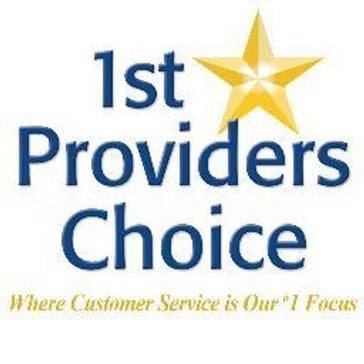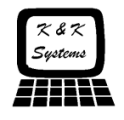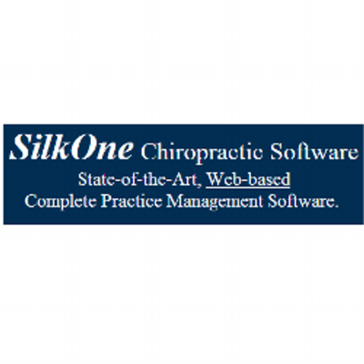- ClinicMind is an Electronic Health Record (EHR) software that provides functionalities for scheduling, billing, and documentation to streamline workflow efficiency in medical practices.
- Reviewers like the all-in-one functionality of ClinicMind, its user-friendly platform, the thoroughness of the SOAP notes, the ability to see the status of claims, the helpfulness of the customer service, and the speed and ease of completing notes.
- Reviewers mentioned issues with the billing portion, the complexity of the billing payment posting, the long processing time for patient payments, the need for more thorough training, the lack of 24-hour chat support, and the small font size of the software.
Best Chiropractic Software
Best Chiropractic Software At A Glance
G2 takes pride in showing unbiased reviews on user satisfaction in our ratings and reports. We do not allow paid placements in any of our ratings, rankings, or reports. Learn about our scoring methodologies.
- Overview
- Pros and Cons
- User Satisfaction
- Seller Details
We believe no physician should struggle to remain in business, face patient retention challenges, suffer burnout, or be cheated out of reimbursements. ClinicMind helps healthcare practice owners thri
- Chiropractor
- Office Manager
- Health, Wellness and Fitness
- Medical Practice
- 96% Small-Business
- 4% Mid-Market
- ClinicMind is an Electronic Health Record (EHR) software that provides functionalities for scheduling, billing, and documentation to streamline workflow efficiency in medical practices.
- Reviewers like the all-in-one functionality of ClinicMind, its user-friendly platform, the thoroughness of the SOAP notes, the ability to see the status of claims, the helpfulness of the customer service, and the speed and ease of completing notes.
- Reviewers mentioned issues with the billing portion, the complexity of the billing payment posting, the long processing time for patient payments, the need for more thorough training, the lack of 24-hour chat support, and the small font size of the software.
104 Twitter followers
- Overview
- Pros and Cons
- User Satisfaction
- Seller Details
ChiroTouch is an EHR, practice management software solution that delivers features to help you manage revenue, find and retain patients, remain compliant, and practice growth.
- Chiropractic Assistant
- Chiropractor
- Health, Wellness and Fitness
- Medical Practice
- 86% Small-Business
- 13% Mid-Market
2,624 Twitter followers
- Overview
- User Satisfaction
- Seller Details
One Complete Solution. Total Practice Performance. While our expertise is in innovative software and billing services specifically for chiropractic offices, we pride ourselves on listening to custome
- Medical Practice
- 90% Small-Business
- 10% Enterprise
311 Twitter followers
- Overview
- User Satisfaction
- Seller Details
EZBIS, Inc. is a leading developer of chiropractic-specific practice management software, with thousands of satisfied customers from coast to coast. The company was founded in 1980 and has been servic
- 100% Small-Business
528 Twitter followers
- Overview
- User Satisfaction
- Seller Details
ECLIPSE is a practice management software with integrated SOAP and billing interfaces to help you manage your practice productivity and profitability.
- Medical Practice
- 91% Small-Business
- 9% Enterprise
- Overview
- User Satisfaction
- Seller Details
ChiroFusion is a provider of affordable, cloud-based practice management software for chiropractic professionals. Their EHR software streamlines all business processes including patient scheduling, re
- 100% Small-Business
30 Twitter followers
- Overview
- User Satisfaction
- Seller Details
PayDC Chiropractic Software helps you manage your practice from SOAP notes to patient scheduling and billing with EHR and a web-based practice management software to help manage revenues and profits.
- 100% Small-Business
160 Twitter followers
- Overview
- User Satisfaction
- Seller Details
zHealth is a complete end-to-end practice management software solution and thousands of chiropractors, office team members and patients access our platform every day. We automate the entire patient’s
- Chiropractor
- Health, Wellness and Fitness
- Medical Practice
- 89% Small-Business
- 14% Mid-Market
- Overview
- User Satisfaction
- Seller Details
MyChartsOnline is a web-based EHR system designed for chiropractors designed to capture the patient notes of chiropractors in electronic form that provides patient ID's to let you see previous notes.
- Hospital & Health Care
- 62% Enterprise
- 31% Small-Business
122 Twitter followers
- Overview
- Pros and Cons
- User Satisfaction
- Seller Details
A simplified chiropractic management platform, engineered from the cloud up to run your entire practice the way you want within a single browser tab. Offices that switch to ChiroHD report increase
- 100% Small-Business
- Overview
- Pros and Cons
- User Satisfaction
- Seller Details
DrChrono is a patient care platform that offers customization at the point of care and on the go. DrChrono also includes scheduling, billing and patient reminders.
- Hospital & Health Care
- Medical Practice
- 73% Small-Business
- 29% Mid-Market
- Overview
- User Satisfaction
- Seller Details
Atlas is a paperless office solution designed for chiropractic office that handles billing, scheduling, treatment and care tracking, and more to help you manage your practice.
- Health, Wellness and Fitness
- 100% Small-Business
- 17% Enterprise
2,358 Twitter followers
- Overview
- Pros and Cons
- User Satisfaction
- Seller Details
Chiro Cat is a truly cloud based all inclusive EHR built exclusively for chiropractors. Billing, voice to text SOAP notes, drag and drop check in and patient portal are all included and available any
- 91% Small-Business
- 9% Mid-Market
- Overview
- User Satisfaction
- Seller Details
Chiro QuickCharts is a practice management software designed to help you manage the everyday problems associated with a paperless practice.
- 100% Small-Business
- Overview
- User Satisfaction
- Seller Details
Platinum is the standard in fully -automated chiropractic EHR practice management software, trusted by thousands of offices everyday. Platinum is priced to meet your office needs with many features an
- 100% Small-Business
- Overview
- User Satisfaction
- Seller Details
Cash Practice Systems provides software and training for running a successful cash-based practice. The software has four main pillars under one umbrella - The Wellness Score for biomarker outcomes ass
- 100% Small-Business
372 Twitter followers
- Overview
- User Satisfaction
- Seller Details
ChiroFusion offers the most reliable & affordable practice management software.
- 100% Small-Business
30 Twitter followers
- Overview
- User Satisfaction
- Seller Details
Run your practice smoother from anywhere in the world with ChiroSpring - flexible, powerful practice management software built for chiropractors. Every robust feature is in one easy-to-use cloud-bas
- 100% Small-Business
187 Twitter followers
- Overview
- User Satisfaction
- Seller Details
EZnotes is a patient document software that automatically manage time, office profits, patient compliance, litigation, and more.
- 67% Small-Business
- 33% Enterprise
- Overview
- User Satisfaction
- Seller Details
Perfect Patients is the leading chiropractic website & digital marketing company. We have more than 15 years of experience building successful, long-term partnerships with thousands of forward-thi
- 67% Small-Business
911 Twitter followers
- Overview
- User Satisfaction
- Seller Details
3D Practice is an integrated chiropractic software that helps educate patients with 3D models and other features.
- 100% Small-Business
301 Twitter followers
- Overview
- User Satisfaction
- Seller Details
Chiropractic software for patient education. Takes your patients inside the body seeing and teaching the effects of their conditions.
- 100% Small-Business
- Overview
- User Satisfaction
- Seller Details
ChiroSoft is a software system designed for the chiropractic profession that provides your practice with features for patient files, scheduling, posting, electronic billing, statistic and reporting, a
- 100% Small-Business
- Overview
- User Satisfaction
- Seller Details
EMR Datacenter is an office management and insurance processing chiropractic billing software designed to help monitor and manage patient appointments.
- 50% Enterprise
- 50% Small-Business
- Overview
- User Satisfaction
- Seller Details
e-nate is a chiropractic management software that provides a paperless solution to help you manage clinical notes, record keeping, automated reports, and more.
- 50% Enterprise
- 50% Mid-Market
- Overview
- User Satisfaction
- Seller Details
iconpractice is a web-based practice software built for chiropractic clinics that allows you to streamline patient processing with features and functions to help you manage your clinic.
- 100% Small-Business
- Overview
- Pros and Cons
- User Satisfaction
- Seller Details
Cloud-based booking platform which helps clinics with workflow management, practitioner management, scheduling, billing, patient record keeping, and documentation.
- Health, Wellness and Fitness
- 93% Small-Business
- 7% Mid-Market
879 Twitter followers
- Overview
- Pros and Cons
- User Satisfaction
- Seller Details
Juvonno is the all-in-one EMR software that tailors to your practice so you feel right at home. Book, bill, chart, schedule, report, and communicate from one customizable platform designed to grow yo
- 100% Small-Business
- Overview
- User Satisfaction
- Seller Details
PostureRay is an EMR, x-ray analysis software that helps you computerize spinal mensuration needed to document patient care, and educate your patient(s) while building your practice.
- 100% Small-Business
1,758 Twitter followers
- Overview
- User Satisfaction
- Seller Details
Report Master is a chiropractic report writer that generates daily SOAP notes and initial, interim and final narratives for you with a point and click system to help you manage documentation of your p
- 100% Small-Business
- Overview
- User Satisfaction
- Seller Details
SOAPe Platinum is a chiropractic EHR and practice management software with real-time eligibility checking, ERAs, SOAP notes, and electronic billing to help you manage your practice.
- 100% Small-Business
18 Twitter followers
- Overview
- User Satisfaction
- Seller Details
WritePad is an EMR system that provides randomized-text exam note and report generation systems that can help you manage efficiency and costs.
- 67% Small-Business
- 33% Mid-Market
45 Twitter followers
- Overview
- User Satisfaction
- Seller Details
Chiropractic practice management software with many features and reporting abilities for chiropractors.
- 100% Small-Business
- Overview
- User Satisfaction
- Seller Details
ASPC Complete is a practice management software that is designed to balance to your practice with the ability to submit your claims directly to the carrier or through a clearing house with electronic
- 100% Small-Business
- Overview
- User Satisfaction
- Seller Details
ChiroCloud is an encompassing EHR and practice management system designed around chiropractic treatment that provides features and functions to help you manage your business.
- 100% Small-Business
217 Twitter followers
- Overview
- User Satisfaction
- Seller Details
Chiroglyphix is a patient education software solution that uses 3D animation to help you teach current and prospective patients about their conditions.
- 100% Small-Business
- Overview
- User Satisfaction
- Seller Details
ChiroPractice Pro is an integrated EMR solution with a user interface, integrated patient visits, and customization to help you manage your office or practice.
- 100% Small-Business
- Overview
- User Satisfaction
- Seller Details
ChiroPulse is an integrated software solution that provides features to help support your office and patient workflow.
- 100% Mid-Market
- Overview
- User Satisfaction
- Seller Details
ChiroSuiteEHR is a healthcare management and EMR SOAP notes software solution that helps you streamline healthcare procedures by allowing your staff to manage scheduling, patient billing, insurance pr
- 100% Small-Business
48 Twitter followers
- Overview
- User Satisfaction
- Seller Details
ChiroWrite is a software solution designed to help with touch screen interfaces to help you record patient visits/exams with detail, generate SOAP notes and narrative reports as needed, and store all
- 100% Small-Business
45 Twitter followers
- Overview
- User Satisfaction
- Seller Details
Clinic Doctor EHr is an online EHR system that creates your SOAPs and claims, provides a billing solution and gives you assistance to help you manage your chiropractic business.
- 50% Mid-Market
- 50% Small-Business
187 Twitter followers
- Overview
- User Satisfaction
- Seller Details
Cloud chiropractic software with an up to date intuitive interface that includes everything needed: EHr, billing, appointment reminders, online scheduling & new patient forms, CRM marketing, two w
- 100% Small-Business
187 Twitter followers
- Overview
- User Satisfaction
- Seller Details
Cloud based practice management and medical billing solution that is simple, efficient, and affordable.
- 100% Small-Business
2,345 Twitter followers
- Overview
- User Satisfaction
- Seller Details
HandyWorks is a chiropractic and acupuncture office management and billing software that provides features to help you manage your clinic or facility.
- 100% Small-Business
- Overview
- User Satisfaction
- Seller Details
Herfert Software provides solutions to help you manage your clinic's needs with practice management, electronic billing and SOAP notes including front desk features, insurance billing, appointment sch
- 100% Small-Business
103 Twitter followers
- Overview
- User Satisfaction
- Seller Details
Mac OS X based chiropractic practice management software that features automated appointment reminders & chiropractic scheduling.
- 100% Small-Business
- Overview
- User Satisfaction
- Seller Details
Medicfusion EHR is a paperless system that is designed to meet your EHR needs with features like clinical documentation, custom forms, and more to help you manage time and money.
- 100% Small-Business
309 Twitter followers
- Overview
- User Satisfaction
- Seller Details
NetChiro is a practice management system that streamlines patient registration and bill payment in an integrated solution designed to work as a unified tool to help manage front office, clinical treat
- 100% Small-Business
- Overview
- User Satisfaction
- Seller Details
PracticePerfect is an EMR and management software that gives you tools you need to manage effectiveness, efficiency and profitability of your practice while also manage compliance and patient care.
- 83% Small-Business
- 17% Mid-Market
2,190 Twitter followers
- Overview
- User Satisfaction
- Seller Details
QNotes Office is an office and EMR solution that provide secure medical records and patient charting, with protection against medical audits with transcription features like document export and more.
- 33% Enterprise
- 33% Mid-Market
- Overview
- User Satisfaction
- Seller Details
SilkOne EMR is a chiropractic EHR software that provides structured workflow to help meet your medial necessity, paperless admissions, point and click features and more.
- 100% Mid-Market
- Overview
- User Satisfaction
- Seller Details
SOAP Vault is web based software for charting and documenting clinical notes electronically.
- 100% Small-Business
- Overview
- User Satisfaction
- Seller Details
A Chiropractic EMR known for its interface because of the simplicity, speed and comprehensive note taking Macros.
- 100% Mid-Market
22 Twitter followers
- Overview
- User Satisfaction
- Seller Details
VitaLogics EHR is a cloud-based EMR system that provides a SOAP note system that streamlines bill processes and real-time statistical dashboard giving you the data necessary to manage your practice.
- 100% Small-Business
22 Twitter followers
- Overview
- User Satisfaction
- Seller Details
WonderDoc Chiropractic EHR allows you to manage your overhead, collections, and patient care with features and functions to help you manage your practice.
- 100% Small-Business
79 Twitter followers
- Overview
- User Satisfaction
- Seller Details
3DRX Insight provides a 3D animation video library and rehab exercises tool that helps educate patients about their specific condition and the required exercises for proper rehabilitation.
27 Twitter followers
- Overview
- User Satisfaction
- Seller Details
Web based chiropractic practice management software. Keeps track of chiropractic billing, scheduling, & inventory tracking.
37 Twitter followers
- Overview
- User Satisfaction
- Seller Details
AcuBase Pro is a medical billing and practice management software that lets you control your daily mission critical management tasks from one location.
- 100% Small-Business
37 Twitter followers
- Overview
- Pros and Cons
- User Satisfaction
- Seller Details
Adit is a fully integrated practice management platform that simplifies operations, communication, and patient engagement across healthcare. With advanced VoIP features like Patient Caller ID, Mobile
- Health, Wellness and Fitness
- Hospital & Health Care
- 88% Small-Business
- 12% Mid-Market
99 Twitter followers
- Overview
- User Satisfaction
- Seller Details
BackChart is a chiropractic office solution allows you and your staff to handle the core aspects of your business from scheduling appointments to scrubbing bills.
428 Twitter followers
- Overview
- User Satisfaction
- Seller Details
BPM Rx is a web-based PT software solution that provides circuit training, garage workouts, and exercise handouts for your clinic or practice.
4 Twitter followers
- Overview
- User Satisfaction
- Seller Details
Improve the experience of your patients with leading chiropractic practice management software and make a great impact in your office by providing a convenient and automated workflow for you and your
- Overview
- User Satisfaction
- Seller Details
Clinic Essentials is a clinic management solution designed with features and interfaces to help you manage your daily tasks such as scheduling, invoicing, reporting, and managing inventory.
252 Twitter followers
- Overview
- User Satisfaction
- Seller Details
Clinic Pro Software offers training and support in the medical or chiropractic software industry. ClinicPro practice management software is used for pain management clinics, OB/GYN, chiropractic, oph
- Overview
- User Satisfaction
- Seller Details
Chiropractic practice management software & chiropractic billing software with diagnosis & procedure codes specific to chiropractors.
- Overview
- User Satisfaction
- Seller Details
Clinic Pro Chiropractic provides solutions for clinic/practice management, medical billing and EHR that allows automatic payment posting, prints forms and patient statements on paper or laser forms, a
- Overview
- User Satisfaction
- Seller Details
CloudChiro is an EHR, practice management solution that provides tools and features to help you manage your productivity, profitability, and efficiency.
126 Twitter followers
- Overview
- User Satisfaction
- Seller Details
CoAction Software is a chiropractic management system that allows you to build, edit, and customize SOAP notes with a SOAP display, and other features to help you manage your practice.
16 Twitter followers
- Overview
- User Satisfaction
- Seller Details
DocPlus is a document management software for chiropractic offices that streamlines paperwork with a scanner and software to create documents to help you manage revenues, marketing, time management, a
71 Twitter followers
- Overview
- User Satisfaction
- Seller Details
Chiropractic practice software focused on document management. Streamlines paperwork with a scanner & software to create documents.
71 Twitter followers
- Overview
- User Satisfaction
- Seller Details
DocuRehab is a web-based practice management, EMR system that allows you to track billing, appointments, patient care and administrative paperwork in one place with reporting functions to allow you to
174 Twitter followers
- Overview
- User Satisfaction
- Seller Details
Web based chiropractic software designed for chiropractors looking for a chiropractic practice management system in their office.
- Overview
- User Satisfaction
- Seller Details
Fiizio helps grow rehab and wellness practices, expand their client-base and add new revenues, by helping them create and offer new digital products and services that improve client and patient outcom
- Overview
- User Satisfaction
- Seller Details
Versatile Software Systems offers a full practice management solution, known as VersaSoft CHIRO (Formerly For Chiropractors Only), and has been offering chiropractic software since 1993. In that time,
- Overview
- User Satisfaction
- Seller Details
Greycat is a management software solution that is designed with a user interface to help you manage each aspect of your practice with appointment management and follow through, paper file management,
- Overview
- User Satisfaction
- Seller Details
Chiropractic Office Management and EHR Software Built Specifically for Network Spinal Analysis Care!
149 Twitter followers
- Overview
- User Satisfaction
- Seller Details
- Overview
- User Satisfaction
- Seller Details
IMS for Chiropractic is a EMR software solution that is designed to help chiropractors manage time and money while also managing, workflow, costs, productivity and overall quality of your practice.
283 Twitter followers
- Overview
- User Satisfaction
- Seller Details
InPhase Practice Management Software is a practice management software solution for chiropractic offices that helps you manage scheduling to billing while tracking out your marketing campaigns and mor
117 Twitter followers
- Overview
- User Satisfaction
- Seller Details
JOGO Health offers a groundbreaking digital therapeutic solution designed to treat chronic pain and neuromuscular disorders without the need for medications or invasive procedures. By integrating wear
- Overview
- User Satisfaction
- Seller Details
Kennebec Proof Preferred is a practice management solution that provides a "fill-in-the-blank" report-driven system that allows you to provide accurate documentation.
- Overview
- User Satisfaction
- Seller Details
Medechart is a cloud-based clinical note taking web application that measures musculoskeletal pain and mobility, tracking a patient's progress over time.
- Overview
- User Satisfaction
- Seller Details
Fully paperless chiropractic software: patient centric, business oriented, and based on chiropractic coaching philosophy.
- Overview
- User Satisfaction
- Seller Details
Looking for a better EMR? We're different because our platform is customizable, complete, and affordable. You'll be as impressed by our honesty as you are by our platform and well make switching easy.
- 100% Small-Business
1 Twitter followers
- Overview
- User Satisfaction
- Seller Details
Netsmart Helper provides a practice management, claims processing, e-prescribing, and online continuing education solution to help you manage your scheduling and billing activities.
- 60% Small-Business
- 20% Enterprise
4,461 Twitter followers
- Overview
- User Satisfaction
- Seller Details
NexySoft is a web-based clinic management software designed to provide you front desk functions and features that allow you to manage patient files, log transactions, and schedule appointments.
- Overview
- User Satisfaction
- Seller Details
Chiropractic EMR system with digital patient files, chiropractic SOAP notes, & practice notes for medium/high patient volume practices.
- Overview
- User Satisfaction
- Seller Details
The Ultimate Practice Growth Platform. PatientStudio provides therapists with an easy-to-use solution for managing the front desk, clinical notes, and billing needs. Our mission is to help therapists
- 100% Small-Business
- Overview
- User Satisfaction
- Seller Details
PostureZone is a posture screening software that creates reports to document posture adaptations and show postural changes.
8,008 Twitter followers
- Overview
- User Satisfaction
- Seller Details
Practice made Perfect is a software solution that provides features like, patient insurance, auto and work related accident billing, scheduling, daily notes, HIPPA compliant electronic billing and mor
- Overview
- User Satisfaction
- Seller Details
PracticeTi.me is a web-based clinic management software solution that helps manage the day-to-day operations such as scheduling appointments, storing patient information, managing staff, creating invo
- Overview
- User Satisfaction
- Seller Details
Pure Chiro Notes allows you to easily track encounters, record payments, manage your clients, & run data-driven reports that make your practice more efficient.
- Overview
- User Satisfaction
- Seller Details
Scribenote is an AI-powered scribe application designed specifically for veterinarians, streamlining the creation of medical records by converting spoken conversations into structured SOAP notes. By r
- Overview
- User Satisfaction
- Seller Details
Complete practice mgmt for Chiropractic practices. Affordable for all size practices from very small to very large multi-doctor, multi-location clinics. Higest level of Support and Infrastructure
- Overview
- User Satisfaction
- Seller Details
Chiropractic practice management software that requires no previous computer skills. Interfaces with a number of EMR for chiropractors.
- Overview
- User Satisfaction
- Seller Details
Stellar Chiropractic Solutions provides solutions for the management of your practice with features and functions to help you manage overhead, efficiency, profits, and more.
- Overview
- User Satisfaction
- Seller Details
Exercise prescription software utilising mobile apps for clients to receive programs from their health professional.
- Overview
- User Satisfaction
- Seller Details
Trainer Tool is a SOAP note management tool for athletic trainers, chiropractors and others, that provides features and functions to help you manage EMR, patient information, generation of PDF reports
1 Twitter followers
- Overview
- User Satisfaction
- Seller Details
Chiropractic software that includes patient management, accounts receivable ledger, patient billing & chiropractic soap notes.
- Overview
- User Satisfaction
- Seller Details
Chiropractic software that helps educate patients and grow chiropractic practices with a 3D patient education product.
301 Twitter followers


























































































